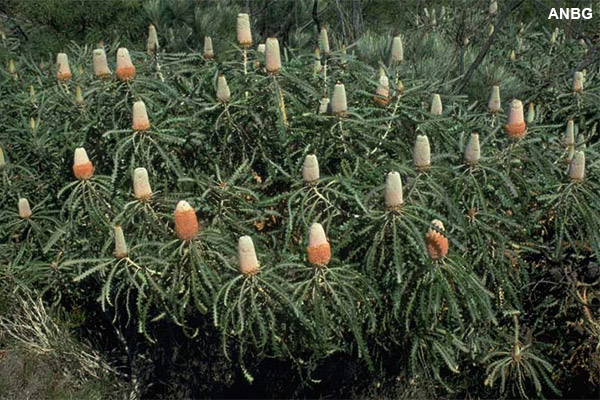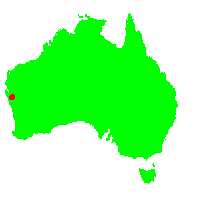General Description:
Banksia victoriae is a tall shrub to about 5 metres high. The leaves are linear, about 150-300 mm long by 25 mm wide and are deeply lobed with with triangular teeth that reach almost to the mid rib Each lobe ends in a pungent point. The cylindrical flower spikes are conspicuous as they occur at the end of the branches (terminal). They have a distinct “acorn shape” as the flowers open and are orange in colour about 120 mm long by 100 mm diameter. Flowering is usually during summer. The seeds are enclosed in follicles attached to a woody cone and are generally retained within the cone until burnt.
This species is fire-sensitive in that it does not have a lignotuber. It therefore cannot regenerate vegetatively after being burnt in a bushfire and relies on seed for regeneration.
B.victoriae is an outstanding ornamental species and ideal for cut flower production due to its bright coloured, terminal flowers and very attractive foliage. It is suited to cultivation in areas with a dry summer climate but is difficult to maintain in areas of high summer humidity. It requires well drained soils in full sun to light shade and tolerates at least moderate frost. Like all banksias, it is excellent for attracting honey eating birds.
Propagation of from seed is relatively easy but cuttings may be difficult to strike.
* EPBC Act = Environment Protection and Biodiversity Conservation Act 1999;
ROTAP = Rare or Threatened Australian Plants (Briggs and Leigh, 1988)
For further information refer the Australian Plants at Risk page

Banksia victoriae
Photo: Photo: Kevin Thiele – Australian National Botanic Gardens
 Australian Native Plants Society (Australia)
Australian Native Plants Society (Australia)